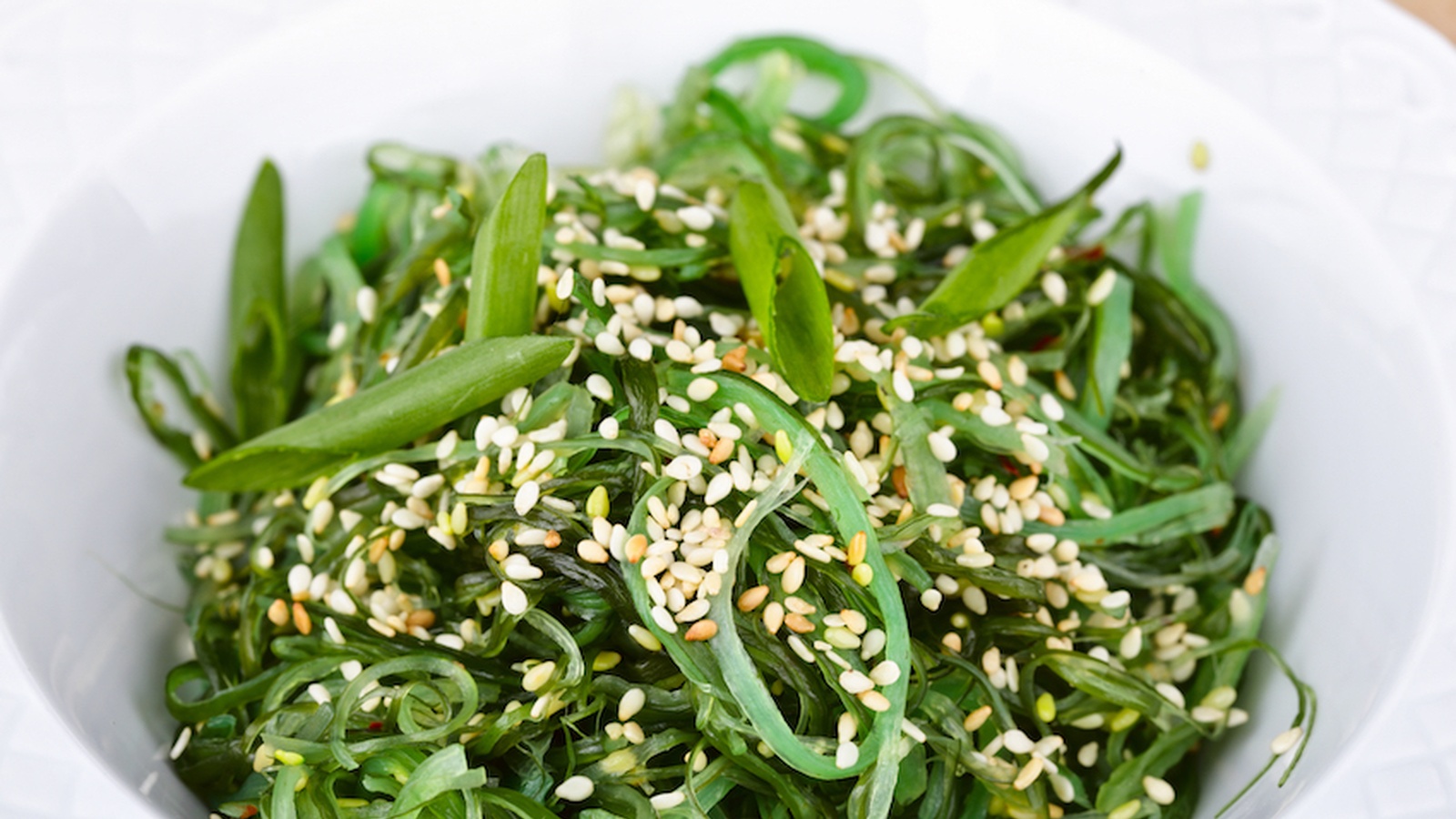Health Benefits of Seaweed and How to Use More of it (Recipes)
Seaweed is one of those superfoods that can do no wrong. From wrapping up our favorite sushi rolls to oxygenating our oceans, there is an endless list of reasons why we love this green goodness. Seaweed is unlike most other plant-based foods and the unique features of the marine environment in which it grows are largely responsible for most of the plant’s rare properties.
With mounting research showing just how nutrient-dense this food group is, more and more people around the world are looking for ways to pack this into their meals. But this is where it becomes tricky. While some cultures have been snacking on seaweed for centuries, there are handfuls of us who remain clueless on how to eat more of it. There’s a strong case for eating more seaweed, and we’re going to show you exactly why and how you should do it.
1. High Source of Iodine
Our favorite ocean food is rich in the much-needed mineral iodine. This essential micronutrient is extremely difficult to find in the modern human diet, so much so that in 1924 the American population became collectively deficient, leading governing bodies to introduce it in table salt. Iodine is essential for thyroid function, metabolism, and brain function, and with an introduction to the modern diet, it collectively boosted America’s national IQ . However, as we turn to Himalayan Rock Salt and Maldon Sea Salt Flakes in the name of health, we’ve got to look for new ways to boost our intake. So leave that table salt in the cupboard and start snacking on some seaweed right away for a thyroid-loving mineral boost.
2. Easily and Ethically Farmed
In a world that is becoming more conscious of what we’re eating, and where it comes from, we should all look to include more seaweed in our diet. While wild seaweed washes up on our beaches every day, it can be easily and sustainably farmed in all, ocean-corners of the world. Damon Gameau’s widely acclaimed documentary 2040 looks to seaweed farms as not only a climate-change-fighting method of agriculture but also a way to reoxygenate our unhealthy water. Sustainable seaweed farming is great for the environment, so ultimately it’s pretty great for the people who live in it!
3. Plant-Based Source of B12
For anyone who eliminates animal products from their diet, the quest for adequate B12 can be a never-ending one. Vitamin B12 is one of the body’s essential, water-soluble vitamins that is vital for cell growth and nerve function. A deficiency can also lead to megaloblastic anemia, making us tired and weak. Vitamin B12 is traditionally only produced in the intestines of animals, so it is impossible to reach our RDI through plant-based sources. While B12-fortified products line our shelves; think tofu, tempeh, plant-based milk, and mock meats, seaweed is the exception to the rule as it contains trace amounts of the essential vitamin! While this isn’t enough to substitute fortified foods, snacking on the sea-greens can be a great way to help keep your micronutrient levels in check.
4. Cleansing and Detoxifying
Seaweed is both a rich source of dietary fiber (good for regulating and emptying our gastrointestinal tract) and chlorophyll, a pigment praised for its role in photosynthesis, but also detoxifying our bodies. In Advances in Food and Nutrition Research , Niranjan Rajapaske discusses how the molecular makeup of seaweed is vital for human digestive health. The fiber present can make up to 75% of the plant’s dry weight, providing a fantastic food source for bacteria in the large intestine. Seaweed is also praised for high levels of essential fatty acids, such as omega-3s.
5. Complete Amino Acid Profile
Us plant-eaters know too well that it’s difficult to get all the proteins our body needs for day-to-day function by snacking on chickpeas, but the amino acids readily available in seaweeds like spirulina and chlorella mean we don’t have to tear our hair out about food combining! For a tiny plant, the grams of protein it’s packing is phenomenal. It is estimated that there are 4gm of protein in 7gm of dried spirulina, so whip out the blender and get those smoothies down!
It’s Easy and Fun To Eat: Try Some of Our Fave Recipes!
With so many types of seaweed at our fingertips, there are always new ways to incorporate them into our diets. For a breakfast on the run, we love these Nori Breakfast Wraps - which take our favorite elements of Japanese cuisine and make it brunch. If detoxing is your goal, try Lee Holmes’ mouth-watering Seaweed and Sesame Salad , which rivals anything we’ve found at our local train. For a protein-packed-punch, try our famous Turbo Charge Smoothie , which we’ve loved since the beginning of time. All good health food stores stock seaweed you can grab for an easy, on-the-go snack in place of chips or chocolate, but if you still can’t get past the thought of where it comes from - grab a roll of your favorite sushi and soak away in this Homemade Energizing Bath Blend .
Now that you’re a seaweed sensei, we can’t wait to see all the ways you pack it into your diet!
Have you tried eating Seaweed before? Let us know in the comments below!
Discover how to eat your medicine to heal your gut, eliminate bloating, skin issues and hair loss as I share seven nutrition principles in this free masterclass. Running for a limited time only.










